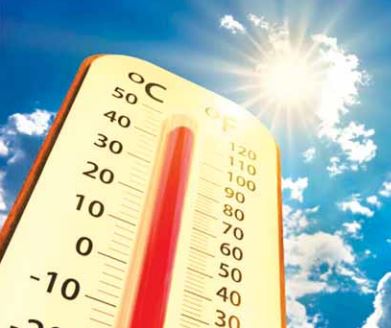Why is Heatwave Dangerous?Bishu is committed and passionate disaster management professional, dedicated to safeguarding
communities and minimizing the impact of both natural and man-made disasters. His background in
disaster management and geography provides him with a strong foundation in disaster preparedness,
response, recovery, and mitigation strategies.
Introduction
Climate change refers to long-term shifts in Earth’s average temperatures and weather conditions. Over the past century, our planet has become about 1.2°C warmer on average. This warming is linked to human activities, like the increase in greenhouse gases. As a result, extreme temperatures have risen globally.
Heatwaves can be extremely dangerous due to several factors:
- High Temperatures and Humidity:
Heatwaves occur when temperatures rise significantly above normal levels for an extended period. When combined with high humidity, the impact is even more severe. Humidity prevents efficient cooling through sweating, making it harder for the body to regulate its temperature. - Outdoor Work and Lack of Protection:
In countries like India, where a large portion of the population works outdoors, exposure to extreme heat is common. Construction workers, street vendors, and rickshaw pullers often labor in direct sunlight without proper protection. Lack of access to shade, water, and rest exacerbates the risk during heatwaves. - Vulnerable Populations:
Low-income neighborhoods are particularly vulnerable to heatwave spells. Residents in these areas may lack resources to cope with extreme heat, such as air conditioning, fans, or even safe drinking water. Vulnerable groups, including the elderly, children, and those with pre-existing health conditions, are at higher risk. - Climate Variability and Extreme Events:
Climate change has increased the frequency of extreme weather events, including heatwaves. Unexpected heavy rains, floods, droughts, and storms are also part of this variability. While regional populations adapt to local climatic conditions over time, extreme events often exceed their adaptive capacity.
Health issues related to heat stress can be deadly and result in socioeconomic losses. heatwaves pose a significant threat to public health, especially in regions with limited resources and vulnerable populations. It’s crucial to raise awareness, implement preventive measures, and provide support during extreme weather events.
New!: Indoor heat is
hitting people hard
A tin sheet roof house can get as hot as 45C indoors! This hits women, children, the elderly and anyone with disability and illness very hard Imagine living in a house with a tin sheet roof during scorching weather. This extreme heat affects everyone, but it hits vulnerable groups the hardest: women, children, the elderly, and those with disabilities or illnesses.
Dangerous Mix: High Temperature and Humidity:
When it’s hot and humid, things get even worse. The combination of high temperature and high humidity is deadly for human survival. As humidity increases, the “feels-like” temperature rises, making it uncomfortable even at lower actual temperatures.
We have a heat index chart that shows how heat and humidity work together. Surprisingly, even at a seemingly mild 27°C (81°F), people can be in extreme danger if the humidity is high. Tropical countries, where humidity levels are consistently high, will face more lethal heat events.
Relative Humidity
Matters
The chart also reveals that as humidity rises, the comfortable temperature drops. What feels okay at low humidity becomes unbearable when it’s muggy. So, the combination of high humidity and high temperature is severe for human health.
What can be the possible measures ?
Traditionally, disaster management focused on immediate actions during and after a disaster. But now, there’s a shift. Imagine moving from just reacting to being well-prepared.
Old Way: Reactive
Response
In the past, we mainly responded when a disaster struck. Relief assistance played a crucial role during crises.
New Paradigm: Proactive Preparedness
We can be more proactive. We ccan identify risks beforehand and take preventive steps.
This can include
• Risk Reduction: Minimizing the impact of hazards.
• Early Warning Systems: Alerting communities in advance.
• Cool Rooftop Solutions: Innovative ways to stay safe from extreme heat
Conclusion
Contrast to events like floods, earthquakes, and cyclones, the effects of heat are not readily discernible since they lack a tangible and visible presence. This often results in heat-related issues not receiving the same level of attention and concern. However, it’s important to recognize that the consequences of heat can be just as catastrophic as those brought about by other extreme events. While floods, earthquakes, and cyclones showcase their impact through immediate and often dramatic physical destruction, the insidious nature of heat makes its effects less apparent at first glance. Heatwaves and prolonged exposure to high temperatures can lead to a series of cascading consequences that affect human health, infrastructure, agriculture, and ecosystems.






